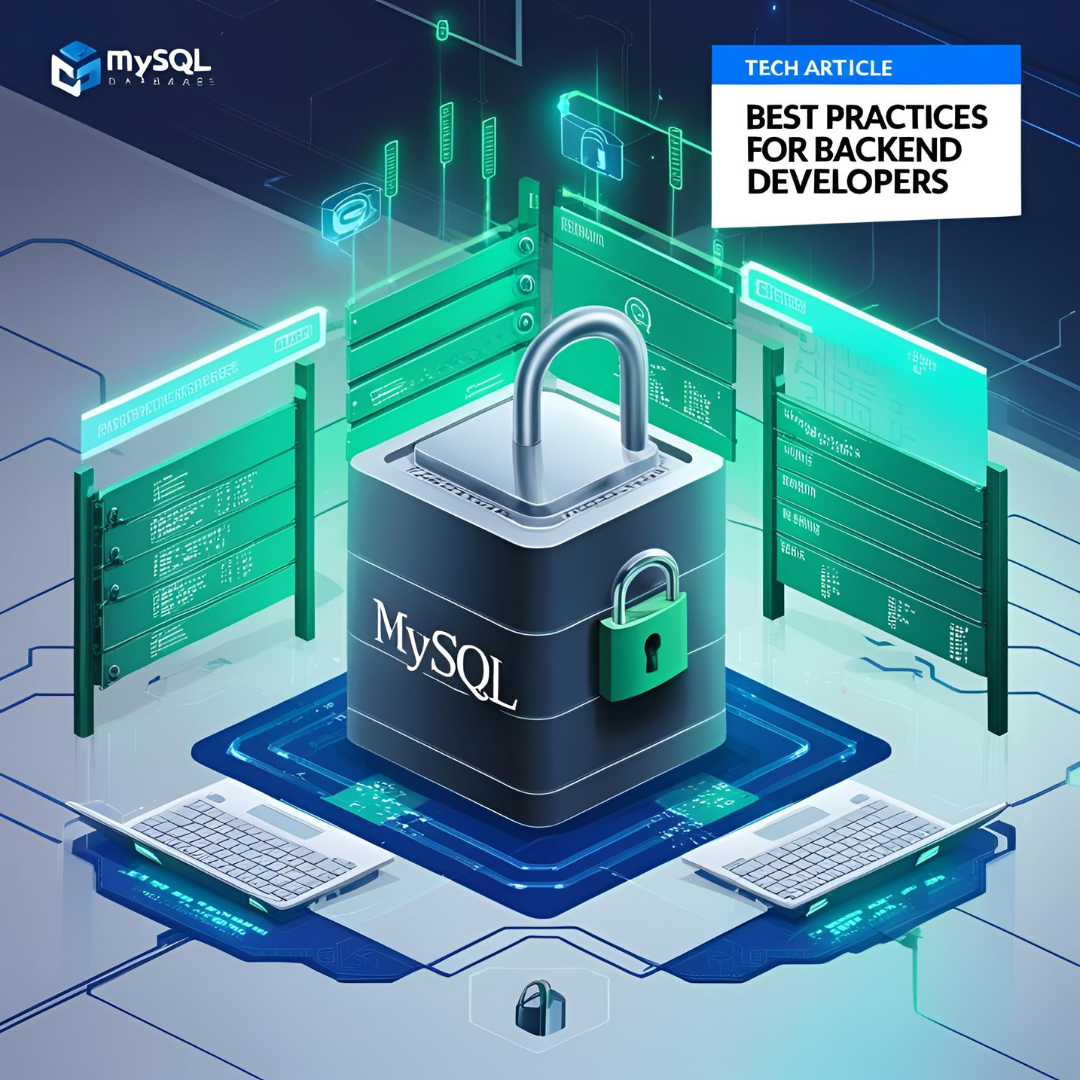As a backend developer, securing your MySQL database is one of your most critical responsibilities. Data breaches can lead to devastating consequences for your organization and its users. This guide covers essential security practices that every backend developer should implement when working with MySQL databases.
1. Implement Strong Authentication
Use Strong Passwords
- Create complex passwords with a mix of uppercase, lowercase, numbers, and special characters
- Enforce minimum password length (12+ characters recommended)
- Avoid using default or predictable credentials
- Rotate passwords regularly
Leverage MySQL’s Authentication Plugins
ALTER USER 'username'@'localhost' IDENTIFIED WITH caching_sha2_password BY 'strong_password';
2. Manage Access Controls Properly
Follow the Principle of Least Privilege
Only grant the specific permissions that users need to perform their tasks:
-- Instead of granting ALL PRIVILEGES:
GRANT SELECT, INSERT ON database_name.table_name TO 'app_user'@'localhost';
Use Role-Based Access Control (MySQL 8.0+)
CREATE ROLE 'app_read_role', 'app_write_role';
GRANT SELECT ON database_name.* TO 'app_read_role';
GRANT INSERT, UPDATE, DELETE ON database_name.* TO 'app_write_role';
GRANT 'app_read_role' TO 'readonly_user'@'localhost';
Regularly Audit User Privileges
SELECT * FROM mysql.user;
SHOW GRANTS FOR 'username'@'localhost';
3. Encrypt Your Data
Enable TLS/SSL for Client Connections
Edit your MySQL configuration file (my.cnf/my.ini):
[mysqld]
ssl-ca=/path/to/ca.pem
ssl-cert=/path/to/server-cert.pem
ssl-key=/path/to/server-key.pem
require_secure_transport=ON
Use Encrypted Connections in Your Application
// Node.js example
const connection = mysql.createConnection({
host: 'localhost',
user: 'username',
password: 'password',
database: 'db_name',
ssl: {
ca: fs.readFileSync('/path/to/ca-cert.pem')
}
});
Implement Data Encryption
- Use MySQL’s built-in encryption functions for sensitive data:
-- Encrypt data
INSERT INTO users (username, credit_card) VALUES ('user', AES_ENCRYPT('1234-5678-9012-3456', 'encryption_key'));
-- Decrypt data
SELECT username, AES_DECRYPT(credit_card, 'encryption_key') FROM users;
4. Protect Against SQL Injection
Use Prepared Statements
// PHP example
$stmt = $conn->prepare("SELECT * FROM users WHERE username = ? AND password = ?");
$stmt->bind_param("ss", $username, $password);
$stmt->execute();
# Python example
cursor = cnx.cursor(prepared=True)
query = "SELECT * FROM users WHERE username = %s AND password = %s"
cursor.execute(query, (username, password))
Validate and Sanitize Input
- Implement strict input validation
- Use allowlists for permitted input characters
- Escape special characters before using them in queries
5. Configure Network Security
Restrict Database Server Access
-- Only allow connections from specific IP addresses
CREATE USER 'app_user'@'192.168.1.100' IDENTIFIED BY 'password';
Use a Firewall
Configure your firewall to only allow MySQL traffic (port 3306 by default) from trusted sources.
Disable Remote Root Access
DELETE FROM mysql.user WHERE User='root' AND Host NOT IN ('localhost', '127.0.0.1', '::1');
6. Regular Maintenance and Monitoring
Keep MySQL Updated
Always run the latest stable version with security patches.
Enable and Review Logs
Edit your MySQL configuration file:
[mysqld]
general_log = 1
general_log_file = /var/log/mysql/mysql.log
log_error = /var/log/mysql/error.log
Implement Intrusion Detection
Consider using tools like:
- MySQL Enterprise Audit
- Open-source alternatives like Percona Audit Log Plugin
7. Database Backup and Recovery
Regular Backups
# Create an encrypted backup
mysqldump --all-databases --single-transaction \
--ssl-ca=/path/to/ca.pem | openssl enc -aes-256-cbc -salt -out backup.sql.enc
Test Recovery Procedures
Regularly validate that your backup can be successfully restored.
8. Additional Security Measures
Use a Web Application Firewall (WAF)
Deploy a WAF to filter malicious traffic before it reaches your application.
Implement Connection Pooling
Properly configured connection pools help prevent DoS attacks.
Run MySQL with Reduced Privileges
Run the MySQL service under a dedicated account with minimal system privileges.
Conclusion
Securing your MySQL database requires a multi-layered approach. By implementing these best practices, you significantly reduce the risk of unauthorized access and data breaches. Remember that security is an ongoing process—regularly review and update your security measures to address new threats.
Keeping sensitive data secure isn’t just a technical requirement; it’s an ethical responsibility to your users and organization. Take the time to implement these measures properly, and make security a priority in your development workflow.


Leave a Reply